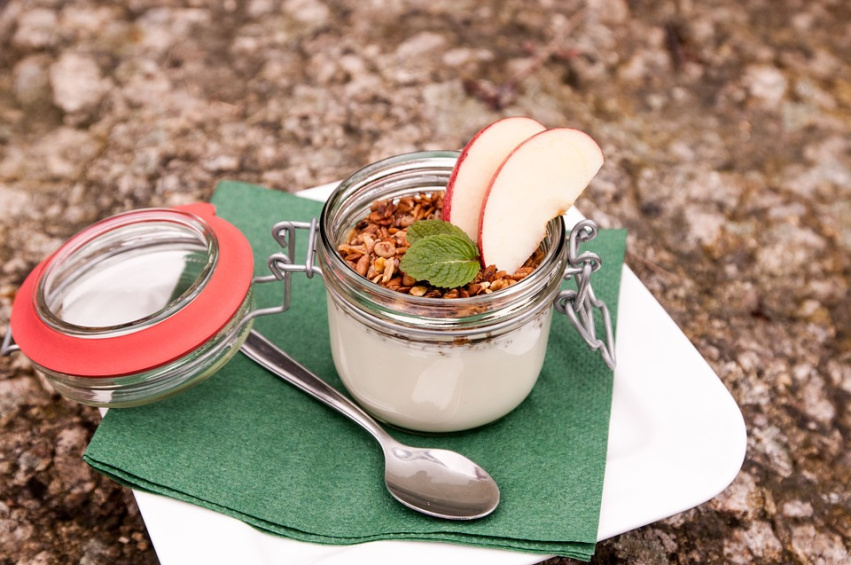As with anything fitness related, balancing your macronutrients is another tool to put into the box that you use to help accomplish your goals.
If you are going to balance your macro nutrient intake, you first need to know what macronutrients are. The term ‘Macronutrient’ refers to “any of the nutritional components of the diet that are required in relatively large amounts: protein, carbohydrate, fat, and the macro minerals.”
Minerals, protein, fat, and carbohydrates. We’ll focus on those last three.
The Numbers
There are two major organizations referred to for the recommended nutrional balances. Those are the American College of Sports Medicine (ACSM) and the Institute of Medicine, now referred to as the National Academy of Medicine (NASEM).
The recommended intake for the three macronutrients we are discussing, according to these two institutions, are:
- Carbohydrates
- ACSM: 58% of the body’s total caloric intake
- NASEM: 45-65% of the body’s total caloric intake
- Fats (lipids)
- ACSM: 20-30%
- NASEM: 20-35%
- Proteins
- ACSM: 12%
- NASEM: 12-35%
The range available for each macronutrient as listed by NASEM is a reflection of how your body needs different amounts of different nutrients based on your lifestyle and the amount of stress you place upon your body. For instance, while we all need fat in our diets, athletes playing for the Seahawks will need a diet focused more on proteins to maintain and build muscle, and carbohydrates for energy and for processing that protein.
Carbohydrates
These are the primary sources of energy in the human diet. They are broken down into simple carbohydrates and complex carbohydrates. The simple carbs are more easily, and more quickly, broken down into the glucose that you find in your bloodstream that is used as energy. This is reflected in stating that they have a high GI (glycemic index) value. This includes foods like honey, candy, and other sweets.
Carbohydrates are often given a bad reputation as simply being excessive calories. This is incorrect, though, for a reason we’ve already lightly touched. Neither of the other macronutrients can be broken down to utilized without the presence of carbohydrates in the liver. The fact that liver can only hold between 200-500 grams of carbohydrates at any given times means that there needs to be a regular influx of carbohydrates to continue to be able to process anything else that is eaten.
One gram of carbohydrates is equal to 4 calories.
Fats
First interesting fact about fats: there are 3,500 calories in one pound of fat.
Don’t think to burn all of that away immediately, though. You need fat to survive. Not only does fat act as an energy source, but it is essential for carrying the fat soluble vitamins A, D, E, and K throughout the body. Fat is also responsible for making calcium available to the body. This is because fat helps the body to absorb vitamin D, which is essential for calcium absorption. Also, polyunsaturated fatty acids must be eaten in a healthy diet as they are essential to hormone production, are necessary components of cell membranes, even help reduce bad cholesterol levels in your blood, lowering your risk of strokes and heart disease.
Cholesterol is a type of fat, too, and it’s one you want. There are good and bad types of cholesterol, but in general it is key to know that it is essential for good health. This is because it is used in composing most body tissues, especially those of the liver, blood, brain, and nervous system. It is needed even for developing sex and adrenal hormones.
One gram of fat is equal to 9 calories.
Proteins
Protein is the most plentiful substance found in the human body next to water. It is composed of 20 different amino acids that the body needs, 9 of which must be consumed in the diet to obtain. While protein is most commonly associated with muscle, it is a major building material for the heart, brain, internal organs, skin, hair, nails, and even the blood. It is essential for forming hormones and regulating body functions. It is even active in making sure that the blood does not become either too acidic or too alkaline.
One gram of protein is equal to 4 calories.
With that you have a basic enough layout to understand the need for each of these macronutrients in your body, and the numbers to do the math to begin crossing the T’s and dotting the eyes to your own dietary requirements. Let’s kick the later off with an example for you to use.
Remember,
1 gram Fat = 9 Calories
1 gram Carb = 4 Calories
1 gram Protein = 4 Calories
If you have a 2,000 calorie a day diet and are aiming for a diet consisting of 20% fat, 35% protein, and 45% carbohydrates, that will look like this:
Fat = 400 calories from 44.4 grams.
Carbs = 900 calories from 225 grams.
Protein = 700 calories from 175 grams.














